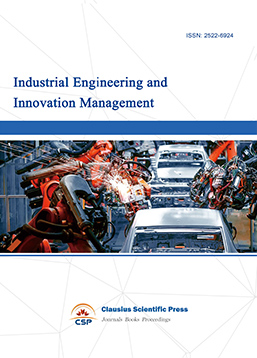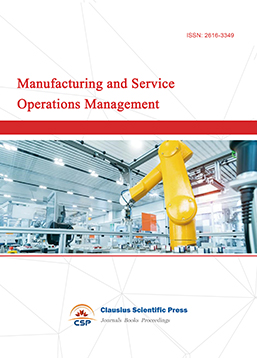The Influence of Different Views on Mixed Ownership Reform on the Mixed Ownership Reform of State-Owned Enterprises in China Based on Internet Data Analysis
DOI: 10.23977/socsam.2024.050107 | Downloads: 32 | Views: 1029
Author(s)
Huawei Wan 1,2
Affiliation(s)
1 School of Marxism, Hainan Vocational University of Science and Technology, Haikou, Hainan, 571126, China
2 School of Marxism, Wuchang University of Technology, Wuhan, Hubei, 430223, China
Corresponding Author
Huawei WanABSTRACT
State-owned enterprises, as enterprises owned, controlled and managed by the state, usually play an important role in the economic system in China, and are directly regulated and guided by the government or the state. Typically, these state-owned enterprises are responsible for achieving the country's strategic goals, but their management efficiency and economic performance have long been criticized. In order to change this situation, mixed ownership reform has been put forward, which tries to combine public ownership with private ownership, not only to protect state-owned assets from loss, but also to stimulate the development vitality of state-owned enterprises. This paper will analyse the different development directions and viewpoints of mixed ownership in China by means of Internet data analysis. In the visual statistics of the literature research direction of CNKI, "equity" is undoubtedly the keyword with the highest frequency in the specific reform direction, and the total number of studies involving this keyword in the research direction is 169. Since the adjustment of equity ownership is one of the main development directions of mixed ownership reform, its impact will also be very important. In addition, this paper also compares the sales of the two state-owned enterprises in China at the end. During the statistical period, the sales of enterprise A, which has gradually completed all the reforms, rose from 303 million yuan to 641 million yuan, while the sales of enterprise B, which has not completed the reforms temporarily, rose from 326 million yuan to 486 million yuan. The comparison results fully show that the mixed ownership reform can improve the management efficiency and even the production efficiency of enterprises, thus bringing a substantial increase in sales.
KEYWORDS
Internet Data Analysis, Mixed Ownership, State-Owned Enterprises, Equity AdjustmentCITE THIS PAPER
Huawei Wan, The Influence of Different Views on Mixed Ownership Reform on the Mixed Ownership Reform of State-Owned Enterprises in China Based on Internet Data Analysis. Social Security and Administration Management (2024) Vol. 5: 52-59. DOI: http://dx.doi.org/10.23977/socsam.2024.050107.
REFERENCES
[1] Stone R W, Wang Y, Yu S. Chinese power and the state-owned enterprise. International Organization, 2022, 76(1): 229-250.
[2] Szarzec K, Totleben B, Piątek D. How do politicians capture a state? Evidence from state-owned enterprises. East European Politics and Societies, 2022, 36(1): 141-172.
[3] Ilham R N, Arliansyah A, Juanda R, et al. Application Of Good Corporate Governance Principles In Improving Benefits Of State-Owned Enterprises (An Emperical Evidence From Indonesian Stock Exchange At Moment Of Covid-19). International Journal of Economic, Business, Accounting, Agriculture Management and Sharia Administration (IJEBAS), 2022, 2(5): 761-772.
[4] Zahid R M A, Saleem A, Maqsood U S. ESG performance, capital financing decisions, and audit quality: empirical evidence from Chinese state-owned enterprises. Environmental Science and Pollution Research, 2023, 30(15): 44086-44099.
[5] Li B, Xu L, McIver R P, et al. Mixed-ownership reform and private firms' corporate social responsibility practices: Evidence from China. Business & Society, 2022, 61(2): 389-418.
[6] Su Z H, Jia H N, Yang D H. Has the reform of mixed ownership reduced the cost of debt and capital for state-owned enterprises? Investment research,2023,42(8):30-52.
[7] Wu S N, Yang L L, Tang X D. The Reform of Mixed Ownership of Enterprises and the Chinese Way of Poverty Alleviation and Poverty Alleviation: From the Perspective of State Owned Capital Participating in Private Enterprises. Financial Research, 2023, 49(8):34-48.
[8] Huang X S, Ma X X. Can mixed ownership reform improve the digitalization level of state-owned enterprises? Research and Development Management, 2023, 35(5):16-28
[9] Zeng Z, Tang S. The Economic Stabilizing Role of State Owned Enterprises under the COVID-19 Epidemic: From the Perspective of Supply Chain Support. Economic research, 2023, 58(3):78-96.
[10] Bai H R, Song Z N, Liang S M, Zhang P, Zhang G L. Imagery Perception Analysis and Comprehensive Attraction Evaluation of Tourism Destinations Based on Internet Text Data: Taking Nanjing City as Example. Areal Research And Development, 2023, 42(4):89-94.
[11] Zong S Y, Dai Z B. Research on the Impact of Data Security Policy on the Innovation of Internet Enterprises. Operations Research and Fuzziology,2023,13(6):6257-6276.
[12] He Y, Yang L. Mixed Ownership Reform of State-Owned Enterprises since Reform and Opening-up: Course, Effect and Prospect. Management World,2021,37(7):44-60.
[13] Jiang X H. Research on Equity Restriction Mechanism of Mixed-Ownership Reform of State-Owned Enterprises: A Double Case Analysis Based on Eastern Air Logistics and Yanchang Shell. Contemporary Finance & Economics, 2023,456(11):87-99.
[14] Pan S W, Liu B R. Correctly Handle the Relationship between Mixed-Ownership Reform to SOEs and the Control Power of State-Owned Capital. Social Sciences in Shenzhen,2023,6(3):60-68.
| Downloads: | 5965 |
|---|---|
| Visits: | 237217 |
Sponsors, Associates, and Links
-
Information Systems and Economics

-
Accounting, Auditing and Finance

-
Industrial Engineering and Innovation Management

-
Tourism Management and Technology Economy

-
Journal of Computational and Financial Econometrics

-
Financial Engineering and Risk Management

-
Accounting and Corporate Management

-
Population, Resources & Environmental Economics

-
Statistics & Quantitative Economics

-
Agricultural & Forestry Economics and Management

-
Social Medicine and Health Management

-
Land Resource Management

-
Information, Library and Archival Science

-
Journal of Human Resource Development

-
Manufacturing and Service Operations Management

-
Operational Research and Cybernetics


 Download as PDF
Download as PDF